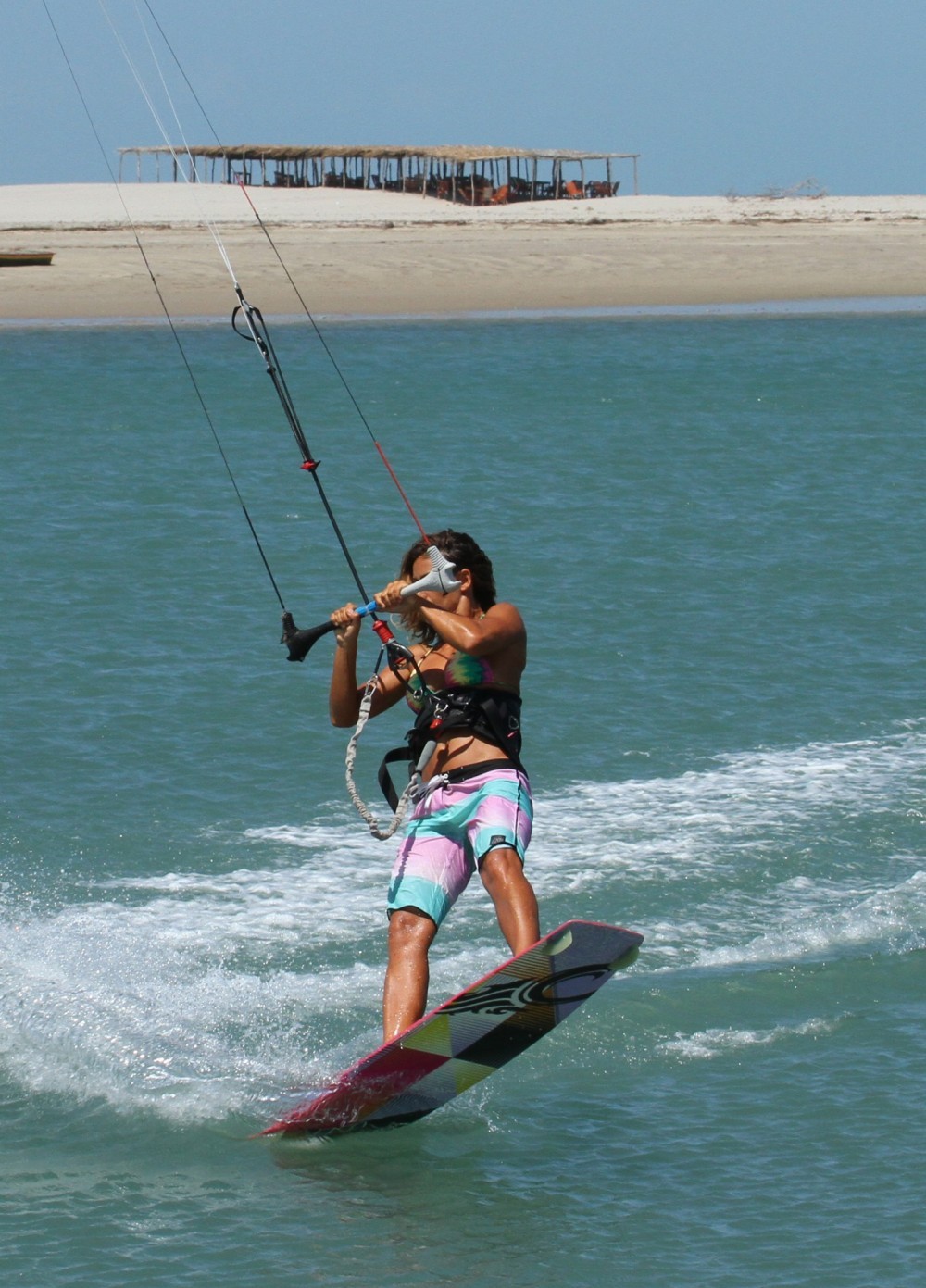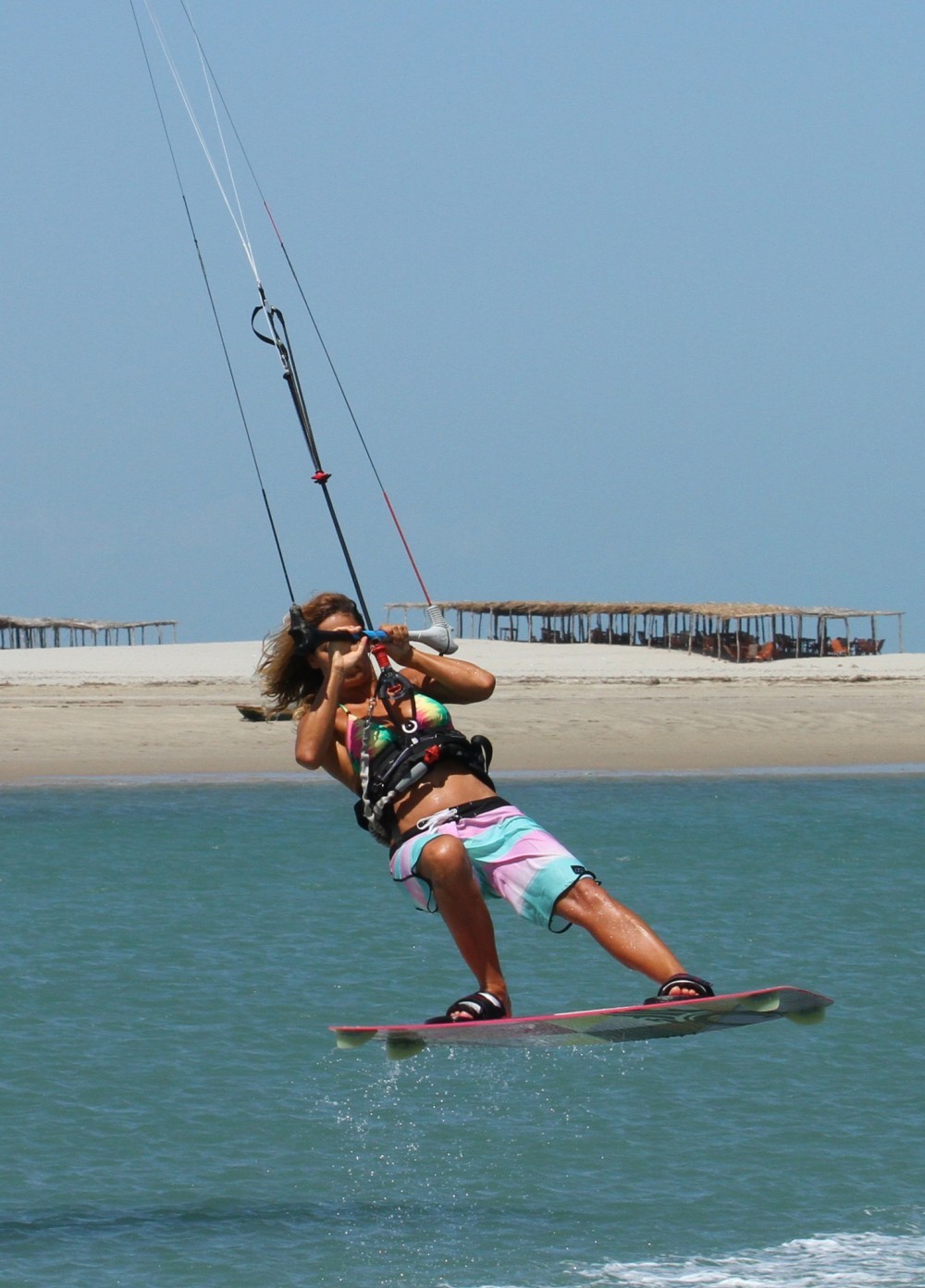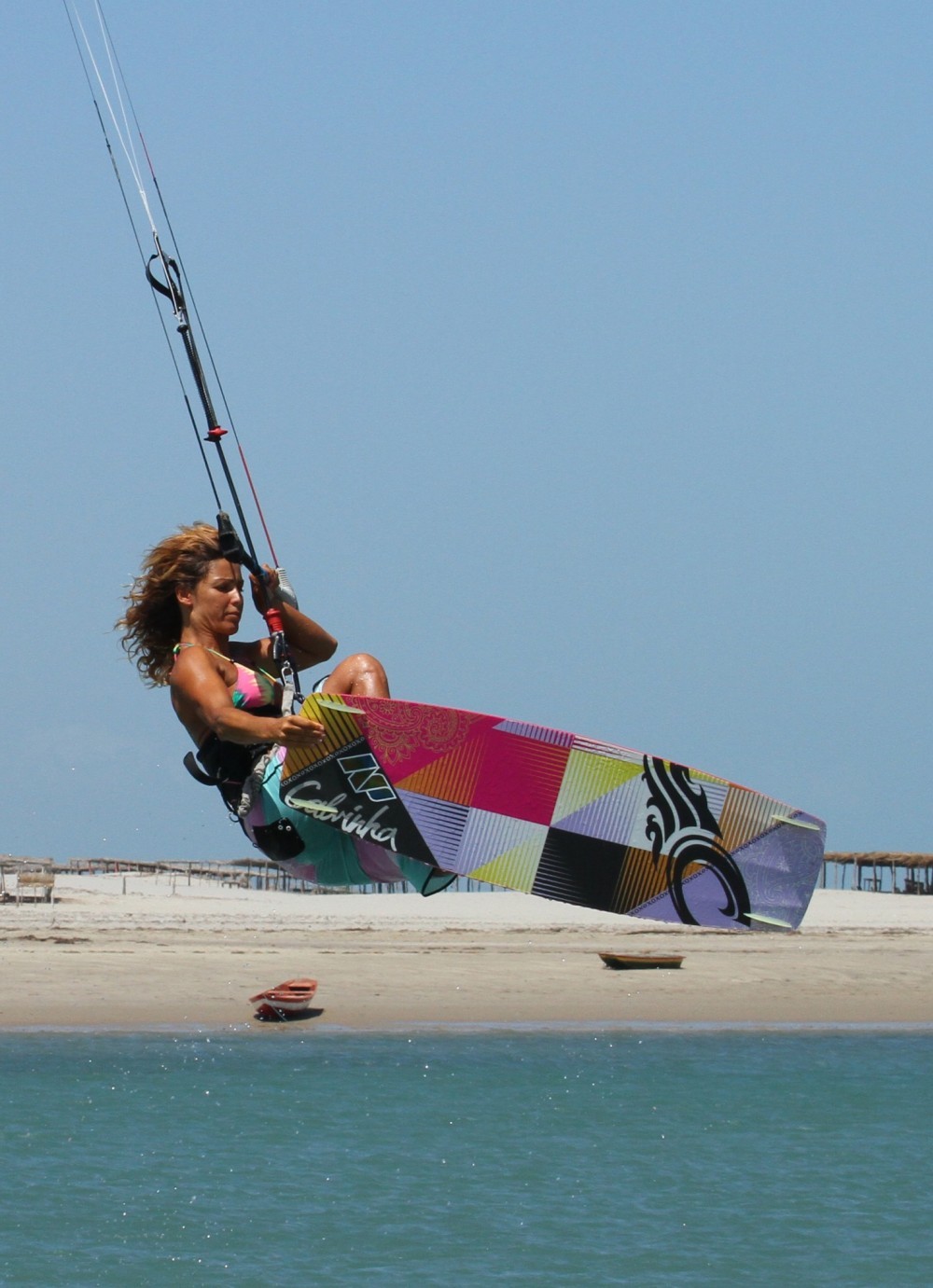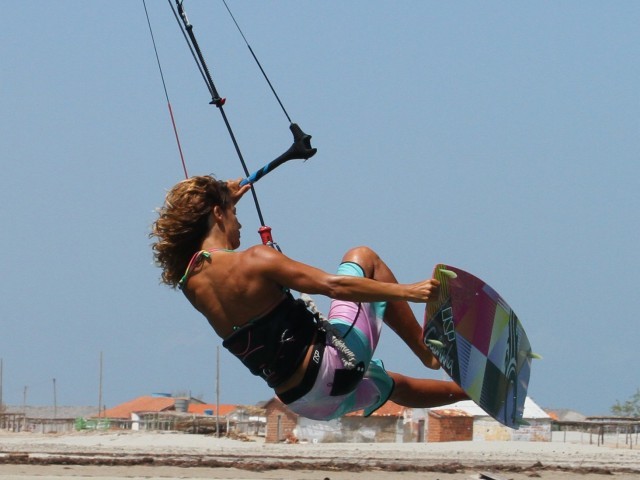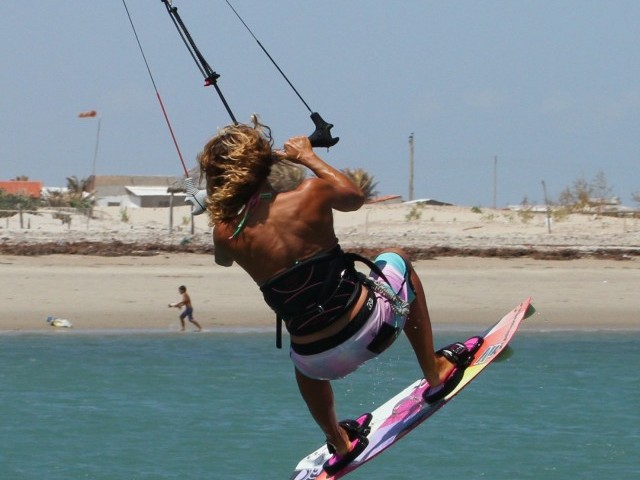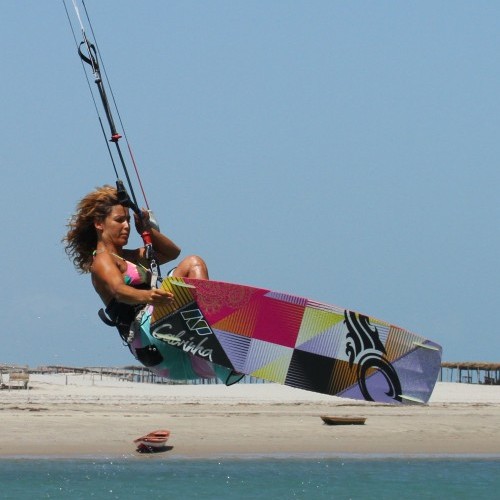
Boned Back Loop
Technique / Intermediate
Introduction
Another fun variation, taking the humble back loop and pepping it up with a cheeky boned grab for more style points and extra satisfaction. We’ll be boning it out with a tale grab here, so extending your front leg whilst pulling the back one in towards you. All whilst slowly rotating around a sent back roll. If this move isn’t tempting enough, nail it and you’ll be more than half way to the one footer (coming soon). So what should you be concentrating on?
Take Off
To bone your back roll out, it’ll need to be slow and you’ll need a bit of float/height. Approach wise you should be coming in on a good edge with the kite either at 11 or 1 o’clock, no higher. Extend your front leg to push your hips back on the board, essential for a controlled back rotation, and even though this will bend your back leg, keep it solid not soft. If you let you back leg bend to much you’re likely to sit down over the tail as you edge and as such you’ll spin into a fast rotation.
To rotate slowly let’s have a look at when and how Karine get’s things under way. Having resisted with a good edge whilst sending the kite quite hard from 11 o’clock the pull should come early, at about 12 or just after. As soon as Karine feels the pull she stamps up off her back leg in a popping motion and pulls the bar in. By popping up into the back loop off her back leg she can’t lean too far back or bend both legs and therefore can’t carve too hard into wind under the kite, so her rotation will be slower. This is because although she is taking off upwind, Karine has not turned completely into wind, so she has further to rotate in the air. And by pulling the bar in Karine can immediately freeze the kite above her, preventing it from continuing back as is often the way in sent back rolls. Note that although Karine has carved into this rotation she has not thrown her head over her front shoulder. You want slow and controlled so keep your head looking forward.
Get Ready
Lift and extend! We’ve said it many times but it’s the same for most grabs, you have to go for the grab straight off the bat, the longer you wait the further you’ll rotate and the less time you’ll have. This doesn’t mean that you have to be holding the board as soon as the fins leave the water but if you get your body in position the grab will be easy to reach. That said you need to extend up into the rotation before thinking grab. As Karine gets airborne she is staring right at the board where she’ll grab it. She also lifts her back foot towards her and extends her front leg forward – she’s ready. This will also help with slowing the rotation down, as if you’re looking for the grab you can’t throw your head around into the rotation.
The Grab
With everything in position the grab should be par for the course. Once you’ve got the tail of the board, pull your arm up and push your front foot away to exaggerate the boning action. You can see that Karine hasn’t rotated much since the last photo. She’s almost stalled the rotation, still looking at the board and the bar is still in. Looking at the grab keeps your head between your shoulders, so will keep you rotating slowly. This is probably a good moment to mention the advantage of giving the kite a decent send for the jump. It’s not just about getting height, but because you’ll spend a considerable amount of time keeping the bar pulled in with only your front hand, the kite will merely move from behind you to slightly in front of you. If you gingerly drift the kite up and it barely gets to 12, by the time you come around your back roll the kite will be way too far forward and pulling you off balance.
Hold It
You want to try and hold your grab for as long as possible and stall your rotation as much as possible. There is however a fine line and depending what the kite is doing you’ll have to trust your instincts. You’ll know if you flunked your take off as getting the grab will be tricky, and even if you get the height you’ll be over rotating into another spin. If however you don’t give enough you’ll quite literally stop whilst facing upwind, a perfect 180 but no back loop! Here Karine is starting to feel the pull from the kite, which is good as it’ll help her finish the rotation, so she has actually sheeted out a bit to slow things down further. You should be keeping the bar in up to this point but depending on whether you’re on a 7 or a 12 the result will be different. Here the 7m moves quickly so Karine needs to sheet out. On a 12 she’ll be pulling progressively on her front hand all through the jump.
Turn and Land
If your rotation is controlled and the kite is not too far forward you can hold the grab until just before touchdown. However to make sure that you complete the 360˚ and get far enough around to land perfectly you will eventually need to turn your head over your front shoulder to see where you’re going, spot your landing and get the board pointing downwind. When you do release the grab, aim to get both hands on the bar and give it a good dive to help you land downwind. As you turn your head focus your eyes downwind, rather than round towards where you’ll go, otherwise you’ll land on too much of an edge.
Top Tips
Start with some back rolls, concentrating on the send, upward take off and slow rotation. Then start to bring your back knee up whilst extending your front leg. Once your happy lift, extend and grab.
If you’re struggling with the slow rotation, try approaching it as you would for a back roll transition, as with less speed you’ll find it easier to go up into the back roll and rid yourself of the spin.
Now have a good look at the Sequence and Videos.
Common Problems
If you are over-rotating your back roll and either landing across the wind on an edge or starting another rotation make sure that you don’t carve up excessively during your take off. You should go from the edge that you’ve approached with, and then kick up and around. Also make sure you dive the kite for the landing as this will stop your rotation and pull you off down wind.
If you’re getting pulled forward and off balance by the kite in the air, either crashing or landing nose first. This is a result of the kite flying forward of 12 o’clock, so in Karine’s case towards 11, and can be due to a number of reasons. Firstly make sure your hands are centred on the bar, keep the bar in with one hand without yanking it forward. Make sure you send the kite, the further it goes back, the further it needs to return, so there is a perfect balance depending on your height and kite size.
Keystones
- Good solid edge with legs resisting
- Send kite positively
- Pop up into the back roll (not around)
- Lift and extend, ready for the grab
- Turn head to complete rotation
This technique article was in Issue 43 of IKSURFMAG.
Related
By Christian and Karine
Christian and Karine have been working together as a coaching team, running improver to advanced kitesurfing clinics since 2003.







